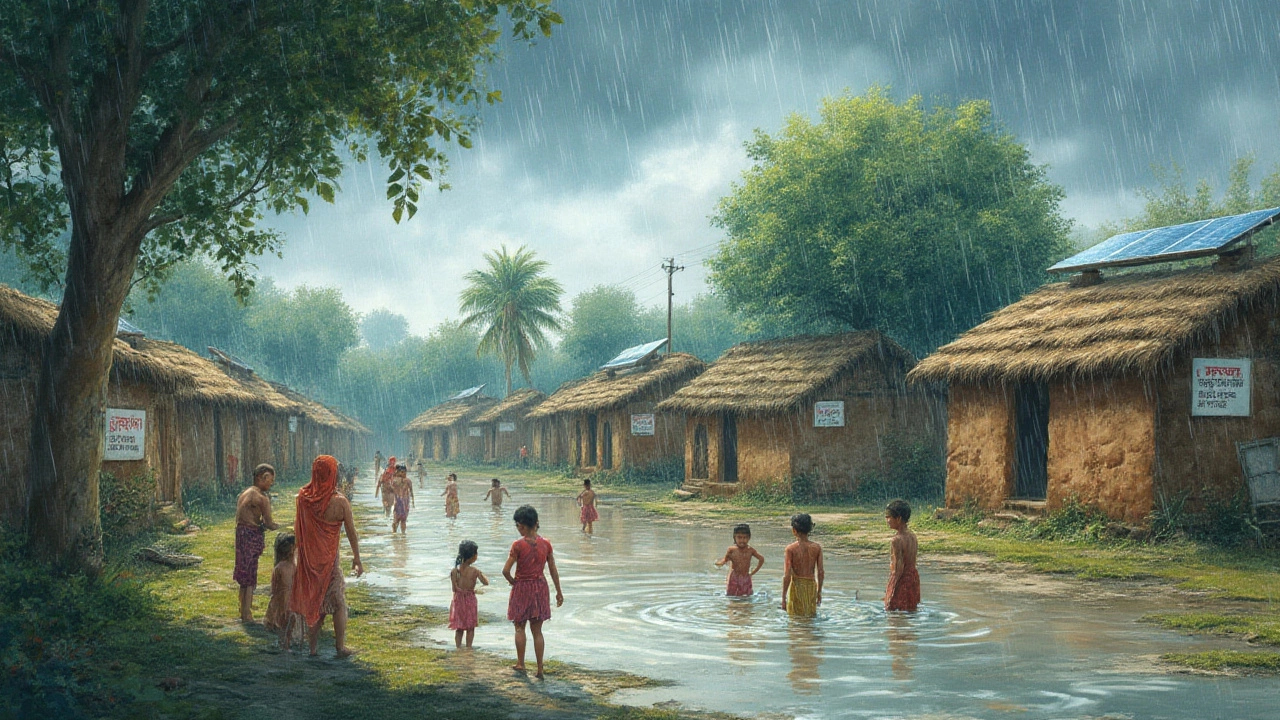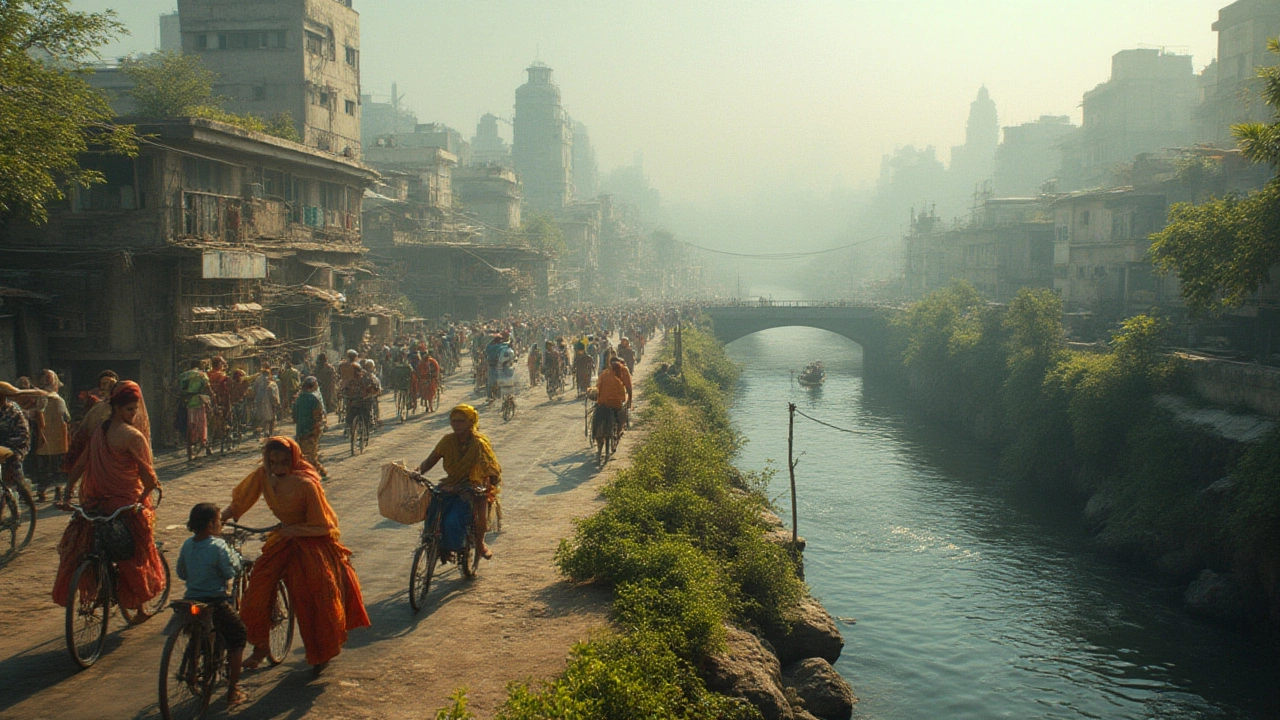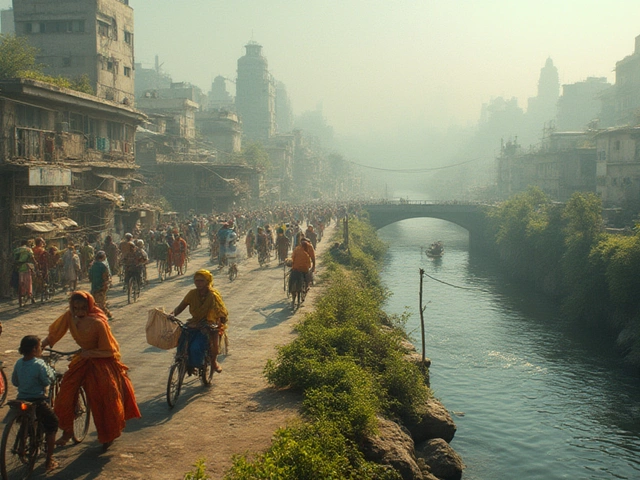The planet feels restless. Forests that once stood tall up north now teeter on the edge. Glaciers that watched over us for millennia are shrinking every single day. Even here in Wellington, winters are getting wetter and winds howl longer. Something is happening to Earth right now, and in 2024, you’d have to bury your head pretty deep in the sand not to realize it.
Environmental Shifts Everyone’s Talking About
Weather has taken a turn for the dramatic. Unusually intense storms swept across Europe in early 2024, dropping historic levels of rain in places like Germany and Belgium where the Rhine and Meuse rivers flooded hundreds of towns. In Australia, bushfires scorched more land in March than in any March on record. Off the coasts, coral bleaching hit the Great Barrier Reef—again. It’s a sting repeated far too often since marine heatwaves began spiking in frequency after 2014.
NOAA’s records show that global average temperatures for the first half of the year set a new high. By July, Earth had already gone through 18 straight months of above-average heat, inching closer and closer to that 1.5°C mark everyone keeps warning about. In fact, the Copernicus Climate Change Service said that June 2024 was the hottest June ever measured since global records began in 1850.
But it’s not just about heat. The air we breathe has changed, too. Cities that rarely saw smog—like Christchurch, New Zealand or Vancouver, Canada—have had "smoke days" from massive wildfires elsewhere. In California, wildfire season has basically lost its start and end date; it just keeps rolling.
Here’s a quick look at some fresh numbers for 2024:
| Event | Record | Region |
|---|---|---|
| Average Surface Temp | 1.43°C above preindustrial | Global |
| Largest Bushfire (by hectares) | 3.2M hectares | Australia |
| Cities Over 40°C | 37 major cities | Worldwide |
| Coral Bleaching | 60% affected reefs | Pacific/Indian Oceans |
| Rhine River Peak Flood | 2.1x historical average | Europe |
What’s driving these changes? A bit of everything, really. Greenhouse gases in the atmosphere, mostly from burning fossil fuels, trap more heat than ever. Deforestation, from the Amazon to Borneo, eliminates natural carbon sinks. Oceans absorb more heat, and their chemistry changes—think more acidic water—which spells trouble for marine life. Everything is interconnected. And for all the folks hoping for stability, 2024 is instead dishing out record-breaking surprises month after month.
It’s also worth mentioning: the UN’s 2024 State of the Climate report didn’t mince words. They straight-up called this decade a “code red for humanity” moment, especially if we don’t slow emissions, restore forests, and shift our habits on a massive scale. That realization is hitting home right now for communities from Bangladesh, dealing with monstrous floods, to Texas, where triple-digit heat indexes last for weeks straight.
How Everyday Life Feels Different Now
People everywhere feel it, not just on the news or in scientific papers, but in their bones. Take food prices—grocery bills are climbing from droughts in South America slamming coffee harvests and heat waves in India wiping out key crops. Kiwis in New Zealand noticed tomatoes more than doubled in price after a soggy summer trashed much of the local supply. Similar stories pop up in France with wheat or Japan with rice. When the weather doesn’t play by the old rules, shelves get thinner and wallets lighter.
In cities, summer days can get downright uncomfortable—even dangerous. Heatwaves in parts of Europe and Asia have packed hospitals as people struggle to cope. Outdoor workers from Thailand’s construction sites to Los Angeles street vendors share tales of near-constant dehydration and heat stroke. Air conditioners buzz everywhere, but power grids in cities like Delhi and Houston just haven’t kept up, leading to rolling blackouts right when people need cooling most.
Even the basics have gotten weird. Remember how June mornings used to be crisp and fresh? Now, you wake up and check your weather app with a certain nervousness. Will today set another record? Will smoke from an Australian fire drift across New Zealand, making your throat scratchy? The unpredictability makes planning outdoor events tricky—all it takes is one monster rain to ruin sports days, music festivals, or that long-promised picnic. Small business owners, especially in agriculture and tourism, say it risks their whole way of life.
Here at home, sea level rise doesn’t just threaten far-off places—it’s creeping up on Wellington’s waterfront. Home insurance prices are blipping upward in vulnerable neighborhoods. In places like Miami, barrier islands are starting to lose real estate, meaning city councils race to build sea walls or raise roads, hoping to keep their literal heads above water for a few more decades.
The mental toll can’t be ignored, either. There’s even a term for it now: “climate anxiety.” More and more people, especially younger folks, report feeling stressed or hopeless, seeing nonstop headlines about disaster zones and vanishing species. Social media is full of worried memes about "heat domes" and "climate doom." People are looking for hope—anything to fight off the sense of helplessness.
Yet, nobody’s giving up. From neighbors pooling resources for air filtration units during wildfire smoke episodes to local councils trialing urban forests and cool roofs, adaptation is everywhere. Kiwis use “rain bombs” to collect water. Australians develop fire-resistant crops. In London, new underground parks spring up for heat relief. This era is about improvising, building resilience, and—sometimes—just making do, one record-breaking week at a time.

What Can Individuals and Communities Do?
So, staring down this tidal wave of change, people might ask: what can anyone actually do? Turns out, quite a bit. Personal choices matter, but collective efforts multiply those impacts.
- Change Transport Habits: In 2024, electric vehicles are more mainstream than ever, and e-bikes outsell cars in Denmark, the Netherlands, and even hilly Wellington. Opting for public transport, cycling, or walking for commutes instantly cuts your own carbon output. Can’t swap cars? Carpooling and route planning to avoid traffic helps.
- Curb Home Emissions: Swapping out gas stovetops and old heaters for electric models, combined with good insulation, drops household energy use fast. Solar panels, even DIY micro-setups, make a bigger dent than most people assume—rooftops from Auckland to San Diego are lighting up. Locally, friends have even built solar "clubs," sharing expertise and toolkits in the neighborhood.
- Eat Smarter: Cutting back on meat (especially beef and lamb), wasting less food, and seeking out locally-grown produce make a real dent. Even one "meatless day" a week, when multiplied by millions, reduces methane emissions worldwide.
- Push for Policy: Voting for leaders who prioritize sustainable practices and back up talk with action changes systems, not just habits. Community groups can lobby councils for green infrastructure—think trees, bike lanes, seawalls, and rooftop gardens. In Wellington, neighbors even help each other with rain garden installations to soak up more stormwater during wild periods.
- Talk About It: This might seem small, but conversations chip away at denial and help break down that “it’s too big to fix” feeling. Yard signs, school projects, and sharing verified climate info on social media normalize caring for the planet as much as caring for your own home.
Schools now teach climate solutions alongside algebra. Companies are finally being judged not just on profits but their carbon footprints and ethical practices. Supply chains get reconfigured, and shoppers have more info to check if their jeans or avocados traveled too far or harmed too much. The power of a few tenacious people organizing cleanups or tree-planting days should never be underestimated—sometimes, it sparks bigger citywide efforts.
One New Zealand highlight: the Taranaki “carbon zero” dairy co-op, where farms use seaweed feed to cut cow methane and solar-powered robots for milking. That project’s blueprint now spreads worldwide. Another inspiring shift—hundreds of Indigenous land management projects are being recognized for keeping forests and savannas healthier than commercial logging ever did.
Practical tips? Sure. For anyone wanting to start:
- Audit your household energy use with free tools from your local council or power company.
- Replace one old appliance with an efficient, electric model this year—it pays back in bills.
- Reduce plastic use. Bulk bins and cotton produce bags are more popular now and make a difference.
- Try a rain barrel setup, even on a balcony. Every liter of water saved matters.
- Invite friends or neighbors to start a "green club"—sharing what works turns small fixes into community norms.
It’s never "too late." Adaptation and mitigation go hand-in-hand. The sooner people and neighborhoods get moving, the more future surprises they outwit. The Earth you shape today helps decide if the stories in tomorrow’s news are about triumph or loss.
Tough Truths About the Road Ahead
No sugarcoating: easy fixes are in the past. No country, not even the ones that used to shrug off "weather weirdness," can dodge this. The world learned last summer that nobody is immune. When Canada’s wildfires made breathing tough as far away as New York City and Madrid, folks realized climate boundaries are imaginary. When drought in southern Brazil bumped up global soy prices, everyone felt it at the supermarket.
Change won’t wait for a perfect plan. That’s clear as city planners scramble to update ancient drainage pipes and old flood maps in real time. Major infrastructure, like hydro dams or highway systems, built for the "old normal" don’t perform when rivers rage or droughts last for years. It means big, sometimes tough, calls: retreat from low-lying neighborhoods, redesign whole farming systems, rethink what jobs are safe when outdoor work becomes riskier than ever.
Climate migration, a topic people danced around in earlier years, is now daily news. In 2024, millions are on the move—leaving coastal Bangladesh, swathes of sub-Saharan Africa, Central America, and even some Pacific Islands. This stirs up fierce debates about borders, aid, and what “home” means in the face of flooded or parched land. Some regions are experimenting with climate visas, and entire international conferences are devoted to helping people relocate or adapt with dignity.
Some of the scariest realities? Biodiversity loss is accelerating. The IUCN Red List counts over 41,000 species as threatened in 2024—20% higher than a decade ago. Pollinators are humming less, tree lines climb mountains, and species used to chilly Norwegian seas now show up in Scotland and beyond. When ecosystems shift, so do human fortunes, because clean water, good soil, and steady weather all rely on healthy nature.
But there’s that old stubbornness in the human spirit. All around the globe, innovators are engineering drought-resistant crops, creating floating farms, and even using AI to predict wildfire outbreaks days before lightning strikes ignite a spark. Drone tree-planting squads race to reforest what chainsaws took down. Grassroots projects—school gardens in Nairobi, seaweed farming in Indonesia, rooftop beehives in Berlin—prove that sometimes, the best antidote to bad news isn’t silence, but action.
The story of Earth in 2024 isn’t just one of danger and difficulty. It’s also one of people doubling down, refusing to give up, outsmarting what can’t be controlled, and building communities that are tighter and more resourceful than ever before. It’s a fight, yes—but it’s also a chance to rewrite what “normal” should look like.


